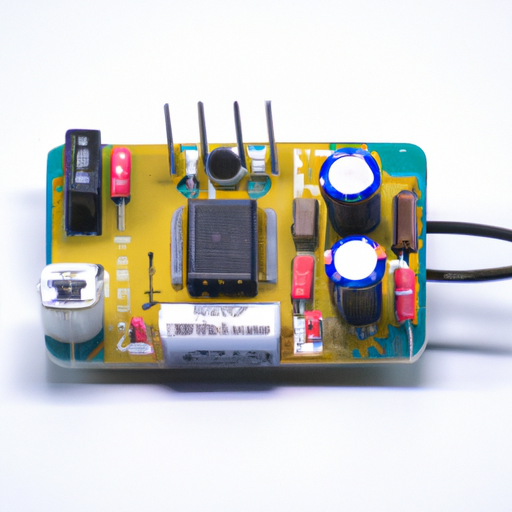
RMS to DC converters, also known as root mean square to direct current converters, are essential components in various electronic systems. They play a crucial role in converting AC signals to DC signals, enabling accurate measurement and control of electrical parameters. These converters find applications in a wide range of industries, including power systems, telecommunications, instrumentation, and audio equipment.

1. Working Principle of RMS to DC Converters: RMS to DC converters are designed to measure the root mean square value of an AC signal and convert it into a proportional DC voltage. The root mean square value represents the effective value of an AC signal, which is equivalent to the DC voltage that would produce the same amount of power in a resistive load.
The working principle of RMS to DC converters involves rectifying the AC signal, filtering it, and then scaling it to obtain the desired DC output. The rectification process can be achieved using diodes or other rectifying elements, while the filtering is typically done using capacitors or inductors. The scaling is performed by amplifying or attenuating the signal to match the desired output voltage range.
2. Product Categories of RMS to DC Converters: There are several product categories of RMS to DC converters available in the market, each with its own unique features and advantages. Some of the key categories include:
a. Analog RMS to DC Converters: Analog RMS to DC converters utilize analog circuitry to convert the AC signal to a proportional DC voltage. These converters offer high accuracy and linearity, making them suitable for precision measurement applications. They are commonly used in power quality analyzers, energy meters, and oscilloscopes.
b. Digital RMS to DC Converters: Digital RMS to DC converters employ digital signal processing techniques to measure and convert the AC signal. These converters offer high resolution and flexibility, allowing for advanced signal processing algorithms and digital communication interfaces. They are widely used in power monitoring systems, data acquisition systems, and digital multimeters.
c. Integrated RMS to DC Converters: Integrated RMS to DC converters are compact devices that combine the necessary rectification, filtering, and scaling circuitry into a single integrated circuit (IC). These converters offer ease of use, reduced component count, and improved reliability. They are commonly used in portable devices, battery-powered applications, and space-constrained systems.
d. Programmable RMS to DC Converters: Programmable RMS to DC converters provide the flexibility to adjust the conversion parameters, such as the scaling factor and output voltage range, through software or external control signals. These converters are suitable for applications that require dynamic range adjustment, calibration, or remote control. They are commonly used in automated test equipment, industrial control systems, and communication networks.
3. Factors to Consider When Selecting RMS to DC Converters: When selecting an RMS to DC converter for a specific application, several factors need to be considered to ensure optimal performance and compatibility. Some of the key factors include:
a. Accuracy and Linearity: The accuracy and linearity of the converter determine the measurement precision and reliability. It is important to choose a converter with a high accuracy specification and low distortion characteristics to ensure accurate and consistent measurements.
b. Frequency Range: The frequency range of the converter should match the frequency range of the AC signal to be measured. Some converters are optimized for specific frequency ranges, while others offer a wider frequency response. It is essential to select a converter that can handle the desired frequency range without significant distortion or attenuation.
c. Dynamic Range: The dynamic range of the converter defines the maximum and minimum input signal levels that can be accurately measured. It is crucial to choose a converter with a wide dynamic range to accommodate varying signal amplitudes and prevent signal clipping or saturation.
d. Power Supply Requirements: The power supply requirements of the converter, such as voltage range, current consumption, and stability, should be compatible with the available power source. It is important to ensure that the converter can operate reliably within the specified power supply conditions.
e. Output Interface: The output interface of the converter should be compatible with the measurement or control system. Some converters provide analog voltage outputs, while others offer digital outputs or communication interfaces. It is necessary to select a converter with the appropriate output interface for seamless integration with the target system.
f. Environmental Considerations: The operating temperature range, humidity tolerance, and other environmental factors should be taken into account when selecting a converter. Some applications require converters that can withstand harsh environmental conditions, such as high temperatures or moisture.
In conclusion, RMS to DC converters are essential components in various electronic systems, enabling accurate measurement and control of electrical parameters. They are available in different product categories, including analog, digital, integrated, and programmable converters. When selecting a converter, factors such as accuracy, frequency range, dynamic range, power supply requirements, output interface, and environmental considerations should be carefully considered. By choosing the most suitable converter for a specific application, engineers and designers can ensure optimal performance and reliability.